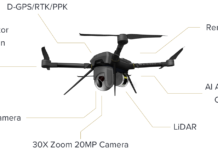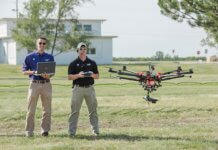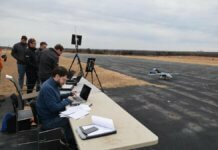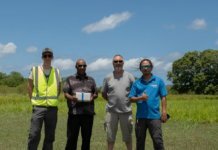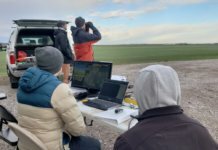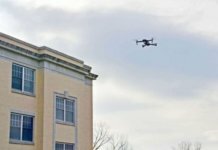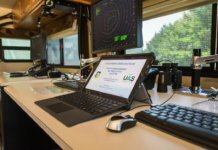The American National Standards Institute (ANSI) has issued a call for participants for its Unmanned Aircraft Systems Standardization Collaborative (UASSC). The announcement follows the UASSC’s kickoff meeting held Sept. 28 in Washington, D.C.
According to ANSI, the UASSC’s mission is to coordinate and accelerate the development of the standards and conformity assessment programs needed to facilitate the safe integration of unmanned aircraft systems (UAS) into U.S. national airspace. The collaborative will also focus on international coordination and adaptability with a goal of fostering the growth of the drone market.
The group will work to develop a standardization roadmap over the course of a year to identify existing standards and standards in development, as well as related conformance programs; define where gaps exist; and recommend additional work that is needed, including a timeline for its completion and organizations that potentially can perform the work. The UASSC will not develop standards, notes ANSI.
Subject-matter experts interested in participating in one or more of the four UASSC working groups are invited to review the working group architecture and return the sign-up sheet before Dec. 31. The working groups will hold online meetings twice a month; the first meetings will take place in January. Participation in the UASSC is open to UAS stakeholders who have operations in the U.S.
ANSI says the Sept. 28 meeting drew 83 attendees from 58 organizations, including industry, trade associations, standards developing organizations, government and others. The program included introductory remarks from the UASSC co-chairs: Earl Lawrence, director of UAS integration at the Federal Aviation Administration, and Brian Wynne, president and CEO of the Association for Unmanned Vehicle Systems International. The group agreed that airspace, risk and regulatory requirements associated with different use cases were key considerations. Four areas to explore were identified: credentialing, airworthiness, operations/procedures and airspace/infrastructure. Breakout groups further identified sub-topics to consider in each of these areas.
A report of the Sept. 28 meeting and supporting documents are available on the UASSC website. This includes a report of a May 19 preliminary meeting of stakeholders who indicated broad-based support for the UASSC and prompted ANSI to announce its establishment. Before the September meeting, an interim steering committee reviewed the outcomes and agreed on a working group structure centered on many of the more frequently mentioned use cases.
“ANSI has a track record of developing standardization roadmaps in diverse areas such as additive manufacturing, energy efficiency in the built environment and electric vehicles,” says ANSI’s president and CEO, Joe Bhatia. “We offer a neutral forum where experts can come together to discuss the issues, particularly in emerging areas of technology when there is a need for coordinated standards activity. We look forward to fostering this dialogue on the role of standardization in addressing the challenges associated with integrating UAS into the airspace and realizing the full potential that this exciting technology offers.”


